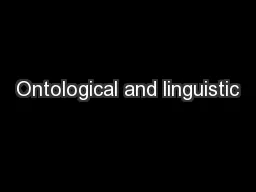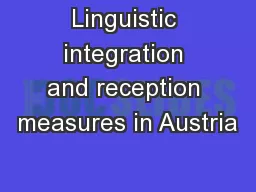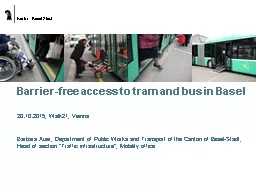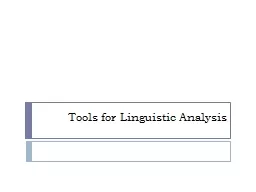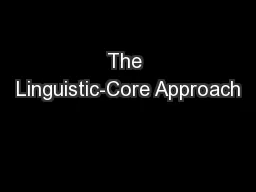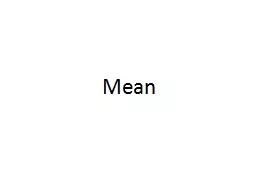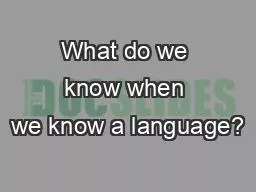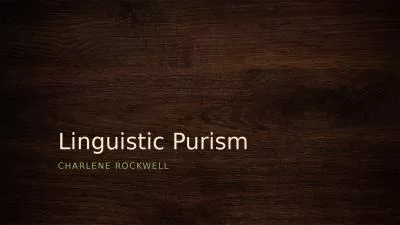PPT-WHAT DOES LANGUAGE BARRIER MEAN? A LINGUISTIC
Author : sherrill-nordquist | Published Date : 2017-12-23
VIEW Ahmad Baki RN BSN Hameed Zahedi RN BSN PhD in ESL Objectives Shedding light on the concept of language barrier from a linguistic point of view Agenda The
Presentation Embed Code
Download Presentation
Download Presentation The PPT/PDF document "WHAT DOES LANGUAGE BARRIER MEAN? A LINGU..." is the property of its rightful owner. Permission is granted to download and print the materials on this website for personal, non-commercial use only, and to display it on your personal computer provided you do not modify the materials and that you retain all copyright notices contained in the materials. By downloading content from our website, you accept the terms of this agreement.
WHAT DOES LANGUAGE BARRIER MEAN? A LINGUISTIC: Transcript
Download Rules Of Document
"WHAT DOES LANGUAGE BARRIER MEAN? A LINGUISTIC"The content belongs to its owner. You may download and print it for personal use, without modification, and keep all copyright notices. By downloading, you agree to these terms.
Related Documents


